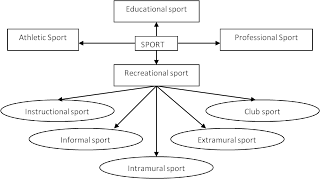a.
Fitness - Biological value
b.
Knowledge - Informational value
c.
Skills - Skilled or performance value
d.
Pleasure - Experimental value
a.
Fitness - Biological value
·
The high value
placed on the fitness show up in concern for such matter as organic well being,
aerobic & anaerobic fitness, strength, flexibility, weight reduction, youth
appearance & lower blood pressure.
b.
Knowledge - Informational value
·
The high value
placed on the knowledge show up in concern for research eliminating te “dumb
Jack” stereotype & various type of learning about human movement.
c.
Skills - Skilled or performance value
·
The high value
placed on skills shows up in concern for motor skills development, the learning
of sport and games skilled, the acquisition of general movement & the
achievement of excellent
d.
Pleasure - Experimental value
·
The high value
placed on pleasure show up in concern for fun, meaningful involvement
self
development & satisfaction of various sorts.









